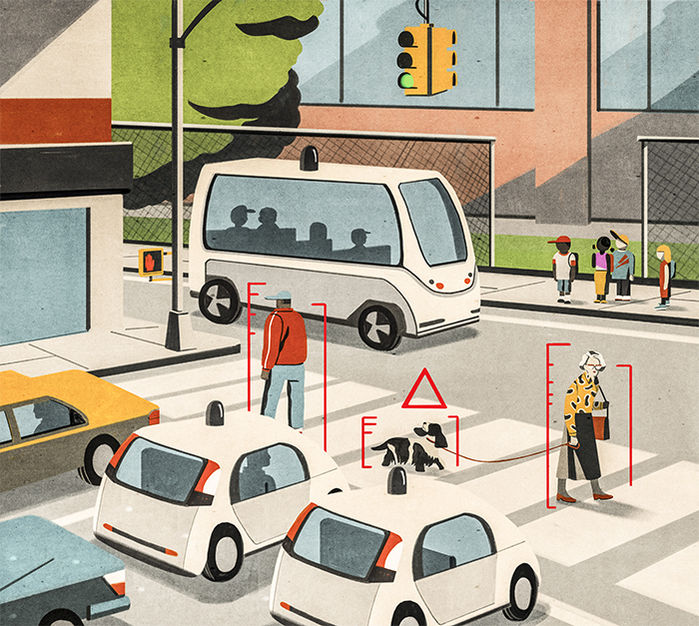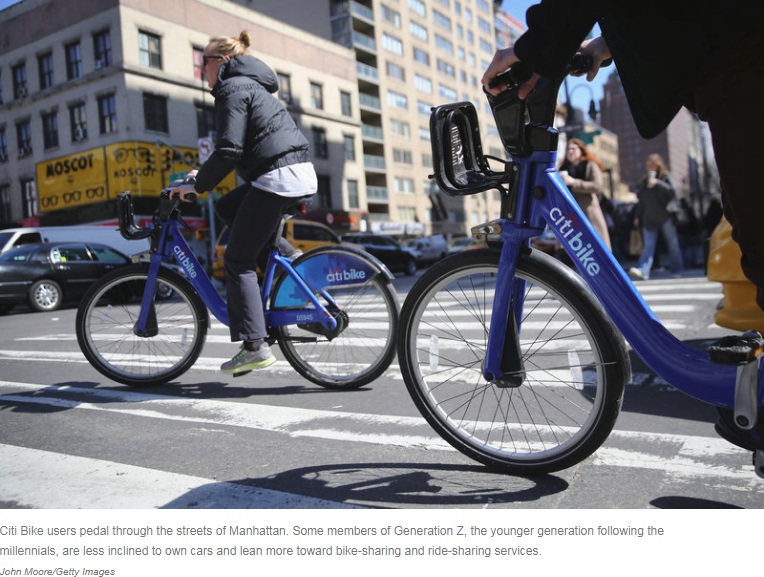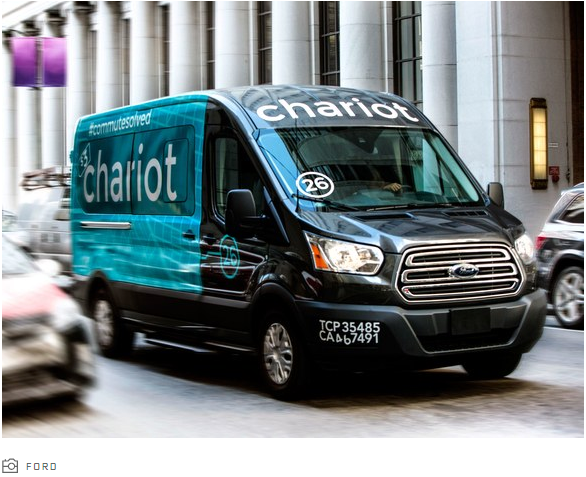
by Innovative Mobility Research | Jan 4, 2018 |
Dec. 14, 2017 By: JEFFREY MERVIS The automakers and high-tech companies spending billions of dollars on developing self-driving cars and trucks tout the idea that autonomous vehicles (AVs) will help create a safer, cleaner, and more mobile society. Politicians aren’t far behind in their enthusiasm for the new technology. “This is probably the biggest thing to hit the auto industry since the first car came off the assembly line,” Senator Gary Peters (D–MI) told a cheering audience of researchers and executives at a recent computing conference in Washington, D.C. “It will not only completely revolutionize the way we get around, but [AVs] also have the potential to save hundreds of thousands of lives each year.” Such predictions, however, turn out to be based on surprisingly little research. While developers amass data on the sensors and algorithms that allow cars to drive themselves, research on the social, economic, and environmental effects of AVs is sparse. Truly autonomous driving is still decades away, according to most transportation experts. And because it’s hard to study something that doesn’t yet exist, the void has been filled by speculation—and starkly contrasting visions of the future. “The current conversation … falls into what I call the utopian and dystopian views,” says Susan Shaheen, co-director of the Transportation Sustainability Research Center at the University of California (UC), Berkeley. In the utopian view, she says, fleets of cheap, accessible AVs offer rides at the tap of a screen. Their ubiquity expands transportation options for everyone. Once AVs are commonplace, traffic accidents become a thing of the past, and enlightened government regulatory policies result in fewer traffic jams...

by Innovative Mobility Research | Dec 8, 2017 |
December 8, 2017 By: NATALIE BETTENDORF Sheryl Connelly has a crazy job. She’s in charge of looking into the future for Ford Motor Co. The automaker is trying to predict how people my age — from Generation Z — will use cars. “I have two Gen Zers at home,” Connelly says. “So my 16-year-old daughter is thrilled, actually. Her car is ready to go. As soon as she has her license, it’s in the driveway. And so she sits in her car and she listens to the radio and she loves her car.” That’s definitely not me. I’m 18 and I don’t want a car. I am from the San Francisco Bay Area. I take buses and trains. I bike, and when I need a car, I use Lyft. Connelly says Gen Z is a game changer. “They don’t really care about ownership,” she says. “They don’t necessarily see that their vehicle is going to be a status symbol. In fact, they’re really savvy customers and can be quite frugal.” Read the rest of the article...

by Innovative Mobility Research | Oct 25, 2017 |
By: Aarian Marshall 10.21.17 Chariot, the Ford-owned van commuter service that crowdsources its routes from passengers, is the subject of some controversy in San Francisco, the city where it was born. For its 3,000 to 4,000 daily riders, Chariot is a valuable, non-personal-car form of mass transit, a cost-effective-ish alternative to the city’s sometimes sluggish and limited public transportation system (a rush hour ride is $5, compared to Muni’s $2.50). For others, the service’s vans are a straight-up nuisance: loudly idling near their homes, belching exhaust, double parking on already crowded streets, and hanging out stops meant for city buses. So it was with a mixture of joy and despair that San Franciscans greeted the news that Chariot had been suspended in California. (It also operates in Seattle, Austin, and New York.) Late Thursday afternoon, as rush hour bore down upon the City by the Bay, the California Public Utilities Commission yanked the service’s operating license. Chariot had failed three routine inspections by the California Highway Patrol, as officials found not all of its drivers had the right licenses to operate the company’s 14-person passenger vans. “We are committed to always providing our riders with safe and reliable service, and we comply with regulatory orders even when we disagree with them,” the company said in an email sent to riders. It’s likely Chariot will be back up and running in a few days, once it passes a re-inspection. According to California Highway Patrol spokesperson Jaime Coffee, the company requested a re-inspection on Thursday and the process began Friday morning. Assuming Chariot has nixed the drivers without proper licenses—or they’ve...

by Innovative Mobility Research | Oct 13, 2017 |
By: Susan Shaheen 11 October 2017 In recent years, a variety of social and economic forces coupled with advancements in technology have quickly given rise to shared mobility. Shared mobility—the shared use of a vehicle, bicycle, or other low-speed travel mode—is an innovative transportation strategy that enables users to have short-term access to a mode of transportation on an as-needed basis. Technological, mobility, and societal trends are having a transformative effect on cities. The growth of cloud computing, location-based services, mobile technologies, big data, and advanced algorithms are enabling the commodification of passenger mobility. The growth of shared mobility has become part of a trend that has pushed it from the fringe to the mainstream. Read the rest of the article...

by Innovative Mobility Research | Aug 1, 2017 |
by Dara Kerr and Richard Nieva August 1, 2017 5:00 AM PDT On an average day outside Johannesburg’s downtown train station, a handful of men in all-black military gear are positioned down the block. They wear bulletproof vests, combat boots and wool beanies. A patch on their sleeves reads, “Hi-Risk Security Company, Rapid Response Unit.” As we exited the train station during a trip to South Africa last month, one of the men approached us. “Are you looking for an Uber?” Meet the private security force working for the ride-hailing company in Johannesburg. “On this corner, you are perfectly safe,” the guard told us. We had only his word for it because clashes between Uber and local taxi drivers, known as “metered taxis,” are now a common occurrence in Johannesburg and surrounding cities. To put it bluntly, being an Uber driver here is dangerous. In the last year, the violence has included reports of Uber drivers being beaten as they drop off passengers at busy areas with taxi stands, like train stations. One Uber driver, whose car was set on fire after an attack in June, died two weeks ago from severe burns. To read the rest of the story, visit:...






